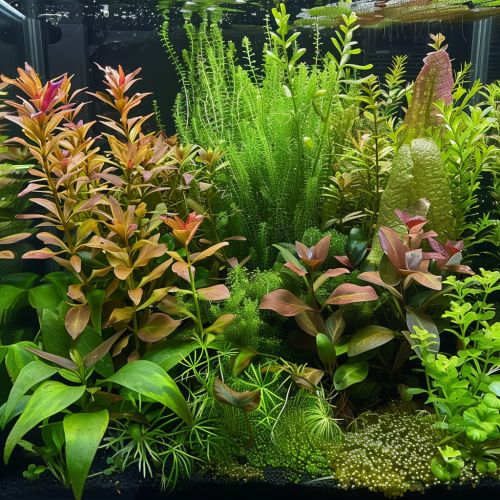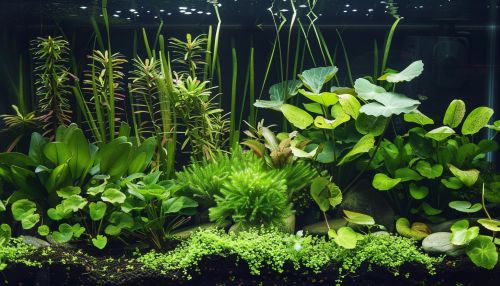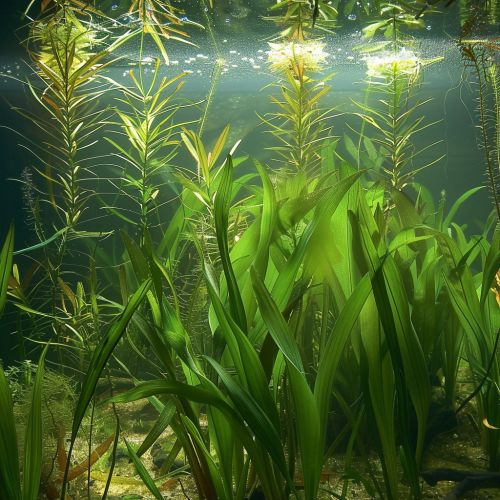Aquatic plants
Introduction
Aquatic plants, also known as hydrophytes or macrophytes, are plants that have adapted to living in aquatic environments. They are a key component of aquatic ecosystems and play a crucial role in maintaining biodiversity and water quality.


Classification
Aquatic plants are classified into three main types based on their growth form and where they are found within the water body. These include emergent, submerged, and floating plants.
Emergent Plants
Emergent plants are rooted in the soil of the water body but their leaves and stems extend above the water surface. Examples of emergent plants include cattails, bulrushes, and reeds.
Submerged Plants
Submerged plants are completely underwater, including their roots, stems, and leaves. They are usually found in relatively clear bodies of water where sunlight can penetrate to the bottom. Examples of submerged plants include eelgrass, hornwort, and waterweed.
Floating Plants
Floating plants are not anchored to the bottom and are free-floating on the water surface. Some have roots that hang in the water, but they are not attached to the bottom. Examples of floating plants include water hyacinth, duckweed, and water lettuce.
Adaptations
Aquatic plants have developed a number of adaptations that allow them to survive in water. These include modifications to their leaves, stems, roots, and reproductive structures.
Leaf Adaptations
Aquatic plants have leaves that are often broad and flat, which allows them to float on the water surface and maximize sunlight exposure for photosynthesis. Some aquatic plants have leaves that are finely divided or feathery, which helps to reduce water resistance.
Stem Adaptations
The stems of aquatic plants are often flexible and can bend with the current. They also contain air spaces, known as aerenchyma, which allow oxygen to move from the leaves to the roots.
Root Adaptations
The roots of aquatic plants are often reduced or absent, as they are not needed for water absorption. In floating plants, the roots may be modified to absorb nutrients directly from the water.
Reproductive Adaptations
Aquatic plants have developed various strategies for reproduction in water. Some produce flowers that emerge above the water surface and are pollinated by wind or insects. Others produce seeds that float on the water surface or have special structures that allow them to stick to the fur or feathers of animals.
Ecological Importance
Aquatic plants play a crucial role in aquatic ecosystems. They provide habitat and food for a variety of organisms, including fish, birds, and insects. They also help to improve water quality by absorbing excess nutrients and releasing oxygen into the water through photosynthesis.


Human Uses
Aquatic plants have been used by humans for a variety of purposes. They have been used as food, medicine, and construction materials. They are also used in the aquarium trade and for water treatment.
Threats and Conservation
Aquatic plants are threatened by a variety of factors, including pollution, habitat destruction, and invasive species. Conservation efforts include habitat protection, pollution control, and the management of invasive species.
